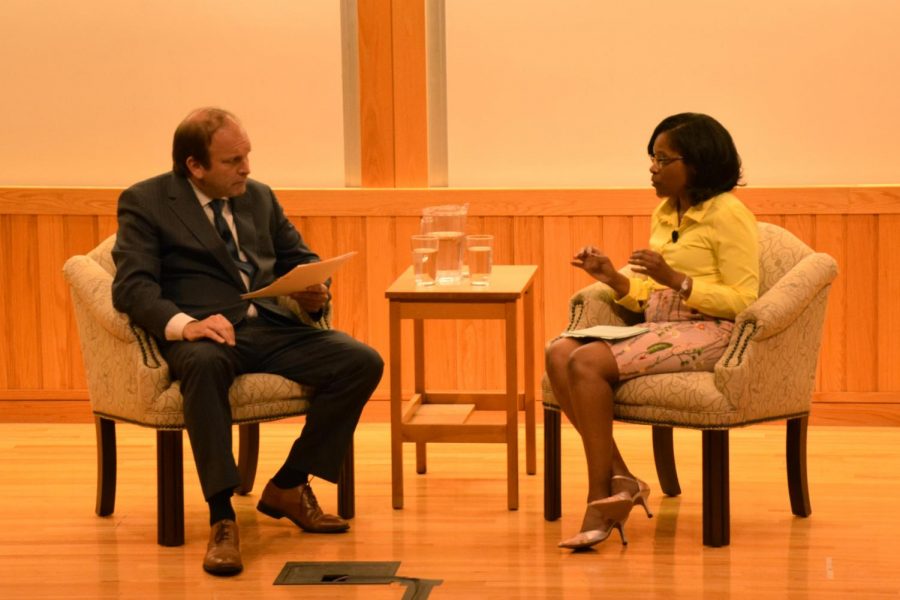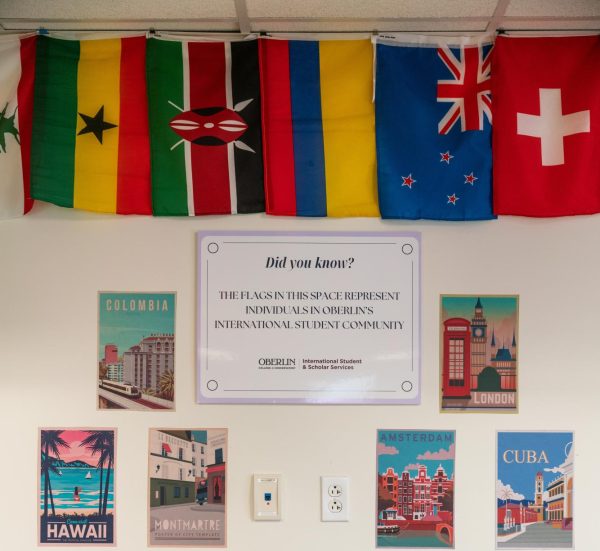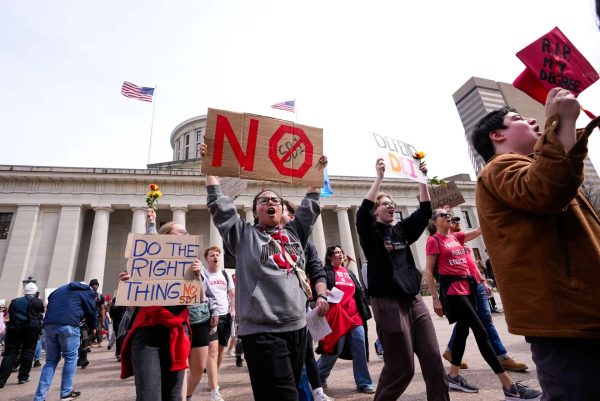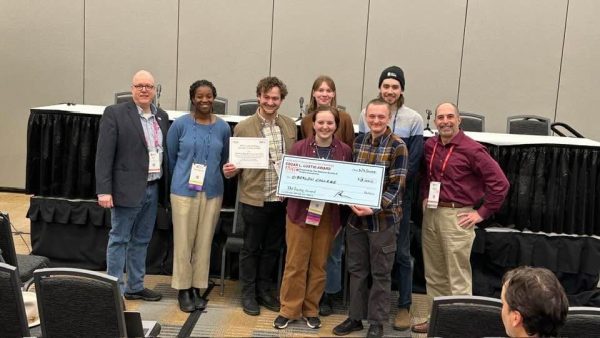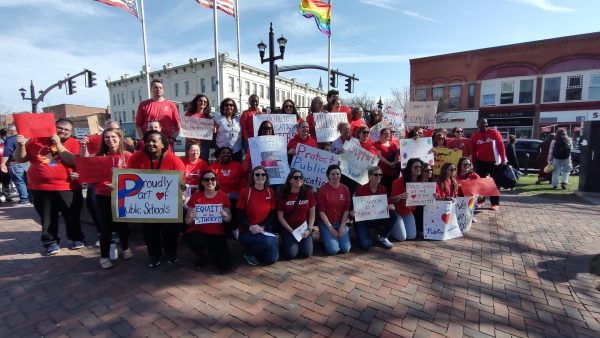Justice Pat DeWine Discusses First Amendment for Constitution Day
Ohio Supreme Court Justice Pat DeWine and Oberlin Vice President, General Counsel, and Secretary Donica Thomas Varner converse about the First Amendment on Constitution Day.
Oberlin College hosted conservative Ohio Supreme Court Justice Pat DeWine in an effort to discuss the First Amendment on college campuses with input from both ends of the political spectrum.
Justice DeWine was elected to the Ohio Supreme Court in November 2016, receiving over 56 percent of the vote. Before his position on the Supreme Court, he served for four years on the First District Court of Appeals. Four years prior to that, he worked with the Hamilton County Common Pleas Court, where — according to his website — he was responsible for lowering the tax burden, eliminating unnecessary bureaucracy, and promoting public safety.
The talk, which took place Sept. 17, addressed how the First Amendment has evolved throughout history, and how it impacts both college campuses and current discourse.
Oberlin’s Vice President, General Counsel and Secretary Donica Varner organized the Constitution Day events. Varner moderated the talk and held a Q&A with DeWine, whom she has known since their time as classmates at the University of Michigan.
“[Justice DeWine and I] went to law school together,” Varner said. “We weren’t close friends, but I knew of him very well. I also knew Pat was a consistent, conservative thinker now serving on the Ohio Supreme Court, and that he’d be a great person to represent the more conservative points regarding the First Amendment.”
The two discussed several topics, such as the line between exercising one’s First Amendment rights and engaging in hate speech, as well as the idea of tolerance, which they explored through hypothetical scenarios involving student-to-student interaction and student-professor interactions. The Q&A also yielded important questions regarding student activism, self-expression, and how courts arrive at just rulings.
Justice DeWine hopes that Oberlin students benefited from hearing his viewpoint regardless of whether or not they agreed with his position.
“[I believe] that the conversation itself is valuable as these are issues that have obviously been on the forefront on college campuses around the country,” DeWine said. “Exposing students to different viewpoints is something I think is helpful.”
Justice DeWine, however, was very careful in his responses. He described his role as Supreme Court judge to be relatively easy. He believes in following the Constitution with as little bias and personal interpretation as possible, and relayed that his job is not to judge the law or be a lawmaker but to follow it to his best ability.
College first-year Torin Record-Sand was troubled by the discussion.
“There’s some kind of third radicalism that goes towards some kind of restoration of the original document,” Record-Sand said. “But I always find this viewpoint very elusive and I do think the speaker proved to be elusive … I still think that recently we’ve seen the way language has been used specifically to motivate acts of violence and the sort of minimalist constitutional perspective of the speaker did not really go well towards the answering those questions … [about the First Amendment] ”
More often than not, any questions addressing his personal beliefs were sidestepped.
There were no novel or nuanced ideas teased out in the talk, which left some students extremely dissatisfied. College first-year Jordann Sadler was disappointed with Justice DeWine’s answers to questions related to First Amendment rights.
“I wasn’t satisfied,” Sadler said. “Not because of his viewpoints, because I want to hear different viewpoints. But because of the very dodgy [way of answering] questions. I didn’t get the definite answers that I needed. I needed more clarification of what he really meant.”
Another audience member posed a question asking the Justice how courts handle new issues regarding technology that didn’t exist at the time the Constitution was made. Justice DeWine expressed that his support for the Constitution can be amended and is surprisingly reflective of modern-day developments.
“[Justice Dewine] represents a movement that defends the original document, which is elusive in itself,” Record-Sand said. “The stance of ‘there’s this Constitution, and we just need to deal with it’ doesn’t make sense to me. Just because something exists in the world doesn’t mean we can derive value from it… It’s not clear that the values exist and that freedom of speech exists in the same way. The First Amendment in recent years has been used to defend extreme intolerance on the Supreme Court.”
In an interview with Oberlin Communication Staff, Varner emphasized that this talk was not just for those interested in politics and law, but for all students including those interested in the humanities and fine arts.
“At one time, there were books that were banned from libraries, and certain posters or imagery were seen as pornographic,” she said. “Who gets to decide that? There are First Amendment issues that impact artists’ ability to express themselves. They are things that I would hope … artists would want to engage in.”
Despite the heavy advertising and build-up to the event, the majority of seats were occupied by Oberlin administrators, with only a handful of students. Varner, however, had a different take on the matter.
“I was pleased regarding the turnout of the event,” she said. “Constitution Day isn’t exactly the hottest-selling ticket on a busy college campus, but I’m very appreciative regarding the outreach of our community to raise awareness. We’d love for the event to be packed, but we understand there are a lot of competing interests. It was larger than our turn out last year so I was pleased regarding the turnout.”
Justice DeWine closed by emphasizing the importance of free speech.
“I think that it’s incredibly important that we allow a variety of viewpoints to be expressed, including on our college campuses. The lesson of the First Amendment and of our history is that it’s almost always better to put up with some speech which we dislike rather than to have government or administrators drawing the lines.”


